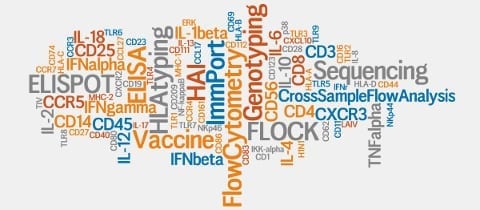The National Institute of Allergy and Infectious Diseases (NIAID) has announced a funding opportunity to support development of computational models of immunity to infectious diseases and biothreat agents.
Applications are sought to develop, refine and validate computational models of immune responses during or following infection, or before and after vaccination. The main goal is to advance understanding of the complex immune mechanisms triggered by infection or vaccination through the development and application of computational models of immunity, coupled with immunological experimentation to validate and improve the utility and robustness of the computational models.
Another goal of the initiative is to make the models and data readily available to the broader research community for further refinement or direct use in biological experimentation. This program will also support pilot projects, workshops, and symposia to foster the use of computational models of immunity by the broader research community.
Computational modeling methods hold great promise to deepen our understanding of this dynamic system, as they have already provided novel insights into various aspects of immune system function, including: antibody production and maturation/somatic mutation; T cell activation; T cell development and differentiation; generation and maintenance of immunological memory; and host-pathogen interactions.
Most computational modeling approaches utilize standard immunological assays as the basis for schematic representations of the immune system, or to integrate knowledge from different immune components to predict the effects of various perturbations on immune function. Recent advances in high through-put technologies and systems biology approaches also offer a wealth of immunological data for computational modeling.
In addition to providing novel insights of basic immune system function, computational models also may be developed to identify key variables and their importance in human immune responses to natural infection or experimental vaccines in silico, either through comparison of results from in vivo and in vitro animal studies with in vitro studies using human cells, or direct calculations from in vitro human studies coupled with analysis of in vivo human data from related infections/vaccines. Such studies would accelerate the development of vaccines and immune-based therapeutics for infectious diseases, and could be especially useful for vaccines against emerging/re-emerging infections and for infectious agents for which vaccine development has been difficult or sub-optimal (tuberculosis, malaria, pertussis, etc.).
Since 2005 NIAID has supported the Modeling Immunity for Biodefense (MIB) Program (RFP-NIH-NIAID-BAA-05-10 and BAA-NIAID-DAIT-NIHAI2009074) to support the development of novel or improved computational models to analyze and predict human immune responses to infection, vaccination, or immune-based therapeutics to protect against NIAID Category A, B and C Priority Pathogens.
The prior MIB programs have provided computational models for analysis of adaptive immune response to influenza vaccination and infection, effects of adjuvants on antibody responses to vaccination or infection, human dendritic cell anti-viral responses and regulation of mucosal immune responses to enteric bacterial infections.
Additionally, all of the biological data used to develop the computational models are available at the ImmPort database, an NIAID-supported public resource providing immunological datasets and data analysis tools to the broader research community.
Highlighted areas of research interest include:
- Elucidation of signaling pathways and regulatory networks of Toll-Like Receptors
- RIG-I like Receptors (RLRs), Nod-Like Receptors (NLRs), other recognition molecules
- Examination of mechanisms for expression and activation of anti-microbial peptides
- Comprehension of the mechanisms by which innate immunity orchestrates or cooperates
- Adaptive immune responses to provide protection against infections or in response to vaccination
- Mechanisms of B cell or T cell activation, effector function, and memory
- Effects of antigen processing and presentation events
- Interplay of mucosal and systemic immune responses on the development, progression and longevity of a protective immune response to infection or vaccination
Further details are available under RFA-AI-14-028.


